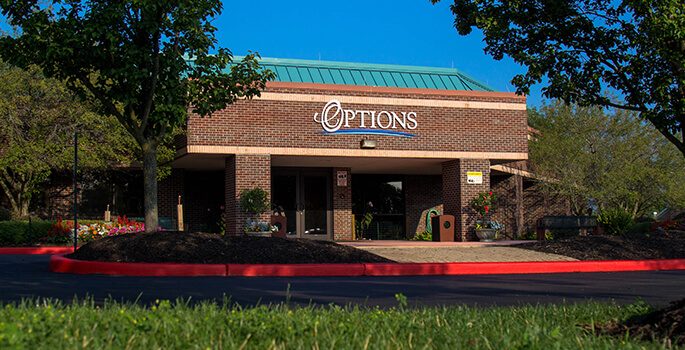Understanding the signs, symptoms, causes and effects of self-injury is an important first step toward healing and recovery.
Understanding Self-Injury
Learn about self-injury
Self-harm, self-mutilation, self-abuse, or self-injury refers to harming the body on purpose. It may also be referred to as “cutting,” as this is a common means of self-injury; however, it is by no means the only way an individual may engage in self-harm. Often, self- injury leaves scars or tissue damage that is not planned. For the most part, someone engaging in self-harm does not intend to kill themselves, and when this happens it is usually by accident, not intent.
The typical age of onset for self-injury is late teens to early adulthood, however this depends on the purpose of the self-injury. This behavior may serve as an attention getting measure, to stop other negative behaviors that are occurring in the environment, as a means of self-soothing or decreasing anxiety when the individual suffers from the symptoms of dissociation, or as a means of remaining grounded.
Some of the most common types of self-harm include:
- Cutting
- Burning
- Pulling out hair, also known as trichotillomania
- Excessive body piercing or tattooing
- Skin picking or pulling off scabs
- Banging head against the floor, wall, or any hard surface
- Hitting self with a hard object or hammer
- Breaking bones in the hands and feet, sometimes larger bones are broken
Statistics
Self-injury statistics
The actual rates of self-harming behaviors are unknown, as most of those who are afflicted with this disorder tend to execute their behaviors behind closed doors. Some research has shown that an estimated one in seven males and one in five females engages in self-harm tactics.
Causes and Risk Factors
Causes and risk factors for self-injury
There is no single cause that leads to self-harm. Some of the leading hypotheses regarding causes are:
Learning – Reinforcement is the key to this explanation. Reinforcement functions to increase behavior. When self-injurious behavior results in increased feelings of calm or an elevation of mood, these rewards increase the likelihood of the person engaging in the behavior again (positive reinforcement). There may also be a decrease in distress levels, negative emotions, or avoidance of concerning thoughts that results from the self- harm. This causes the behavior to increase because it takes something negative away (negative reinforcement).
Coping Strategy –Sometimes self-harm may serve as a coping strategy. Should this be the only way an individual has learned to cope with negative life events, they will utilize it anytime they are faced with stress.
Emotional Regulation – Reports from individuals who engage in self injury indicate that for some, the behavior serves to relieve tension when they can’t otherwise successfully deal with severe distress and other extreme and overwhelming emotions.
Distraction/Avoidance – For others, the pain involved in self harm can serve as a distraction from negative emotions or as a means of avoiding or escaping from them.
Control – Some individuals use self-injurious behavior to gain a sense of control over something, in this case their own bodies, when they feel that their life has become chaotic and unpredictable. The behavior is perceived as the only thing they can take complete control of.
Create Sensation – Sometimes people may have experienced a severe trauma or chronic stress which has resulted in emotional numbing. Desperate to feel anything, even pain, they engage in self harm to establish some type of emotion. The pain triggers the release of natural endorphins and can result in a sense of heightened pleasure.
Express Emotions– Sometimes individuals never learned to identify, label, or properly express emotions in childhood (Alexithymia). They may have been taught that emotional expression was not acceptable. Having no way to label or express their emotions adaptively, they use self-injury as a means of communicating when they are feeling bad.
Compensation for the Inability to Fight Back – In some families, children are forced to take verbal abuse while not being allowed to respond or fight back. As they grow up this cycle continues until they discover that harming themselves in front of the abuser stops the argument immediately and often rids them of the abuser’s presence.
Punishment – Individuals who have grown up with the message there is something wrong with them or who are severely depressed and have similar thoughts often feel guilty, inadequate, or worthless. They may come to internalize these beliefs, ultimately developing the perception that they are filled with flaws and sins. These individuals may use self-harm as a means of punishment for these faulty perceptions of a life filled with perceived transgressions.
Despite how many may judge self-harm, it’s important to understand that it is serving an important function. Thus, it is crucial to teach individuals with this behavior many coping strategies, social skills, assertiveness techniques, and emotional regulation skills before taking away their primary means of coping. If you do not replace the behavior before taking it from them, you may elicit greater negative responses, doing more harm than good in the process.
Signs and Symptoms
Signs and symptoms of self-injury
While the specifics of this type of behavior vary widely based on the individual, some of the more common symptoms of self-injurious behavior includes:
- Scarring in areas that can be hidden from sight
- Cuts or burns
- Frequent fresh wounds such as abrasions, lacerations, or contusions
- Broken bones
- Carrying sharp objects around, such as knives, scissors etc.
- Always wearing clothing that covers as much of the body as possible
- Whenever injuries are noticed, the individual claims to have had an accident
- Social withdrawal and isolation
- Chronic problems relating to others
- The individual consistently wonders about who they are and why they were born or what their purpose in life is but cannot generate answers
- Seemingly unstable and unpredictable
- Impulse control problems
- Feelings of helplessness, hopelessness, or worthlessness, possibly accompanied by statements expressing these feelings
- Overt hostility
- The self-injury is repeated, leading to bleeding, tissue damage, and/or pain
- The individual has the expectation that the self-injury will put an end to whatever makes them suffer
- To cause a positive mood state such as a sense of peacefulness or feelings of euphoria
- Right before the self-harm incident, there is an interpersonal conflict, excessive negative emotions, painful thoughts, or a sense of shame due to the belief that the individual is bad.
- Developing obsession about the self-harm behavior
- Almost constant thoughts of self-harm even if there’s no intent to act upon them
- Significant distress experienced after the act
- The behavior interferes with the individual’s ability to function normally in day to day activities
Effects
Effects of self-injury
Self-injury can result in numerous negative effects including:
- Broken bones
- Permanent scarring
- The infliction of wounds that can become seriously infected and have permanent health effects
- Social withdrawal and avoidance of others to prevent someone from trying to stop their behavior
- Concern and fear that others will learn of their behavior and label them crazy
- Due to being unable to stop the behavior, individual feels helpless and worthless and believe they are defective in some way. It is not unusual for depression to also set in.
- Substance abuse disorders may develop as a means of self-medication. This puts the person at increased risk of a severe injury or death should they engage in self-harm while under the influence of the substance
- Self-injury often becomes worse over time due to the increase of thoughts related to the behavior











